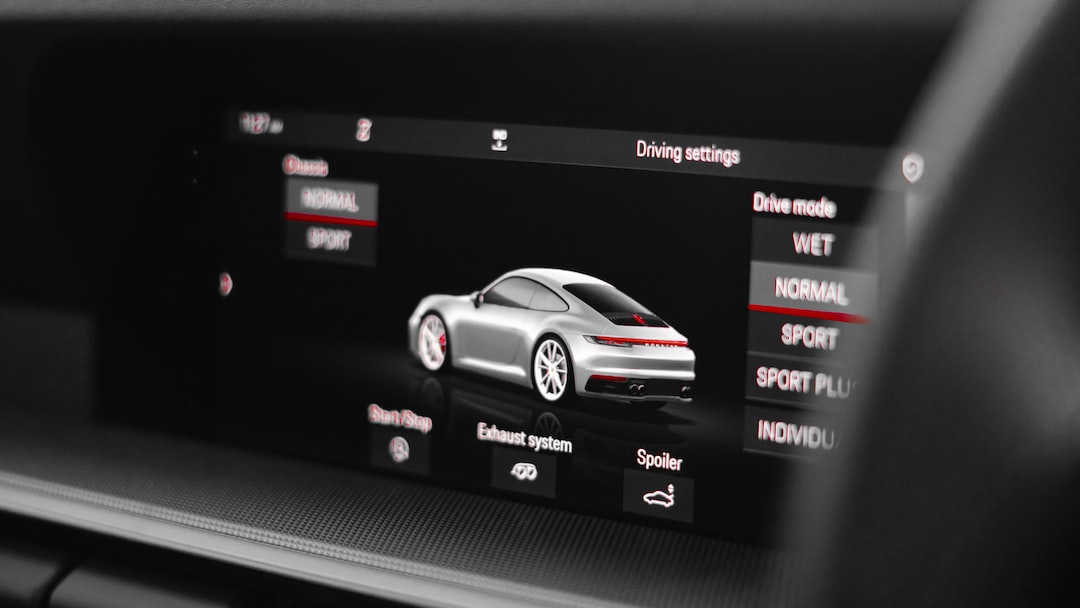What Is an In-Vehicle Monitoring System? How Does It Work?

In today’s fast-paced world, managing a fleet of heavy vehicles can feel like a daunting task. Fleet management is a task that requires keen oversight, strategic planning, and constant vigilance to ensure safety, maintain schedules, and optimise fuel consumption.
However, with advancements in technology, this process has become a lot simpler. In-vehicle monitoring systems are an efficient solution to help manage and monitor your fleet and its operations.
These systems are designed to enhance safety and efficiency by providing real-time data and alerting drivers of any potential issues. Let’s explore exactly how these monitoring systems work.
What Is an In-Vehicle Monitoring System (IVMS)?
An in-vehicle monitoring system is a type of technology designed to help businesses that rely on large fleets of commercial vehicles, such as trucks and buses, monitor their assets.
It works by providing real-time tracking data to help track the location of vehicles, measure performance, and enhance safety protocols.
These devices can store information that can be later extracted and analysed to decipher if the driver has been following safe practises. Several organisations use this to ensure that their vehicles are protected from accidents or early wear and tear.
The IVMS technology gives owners a greater level of visibility into their fleet operations, helping them to operate more efficiently and safely.
How Do Vehicle Monitoring Systems Work?
An IVMS device consists of several components that work together to provide real-time data. At its core, the system consists of a GPS tracker and a software package.
The GPS tracking device is installed on the vehicle and continually transmits signals to satellites in order to identify its location. This information is then sent back to a satellite or base station in order for it to be processed and sent to the software application.
Once the data is received, it can then be used to create various reports, such as trip duration or fuel consumption analysis. The software package also provides functions such as geofencing alerts and engine diagnostics monitoring.
Geofencing alerts allow fleet owners to set up boundaries around certain locations and receive an alert if any of their vehicles cross the boundary. This is a useful feature for maintaining security or monitoring driver behaviour.
Engine diagnostics can also be monitored to detect any potential problems with the vehicle’s performance, such as low oil pressure or engine temperature.
Features of an In-vehicle Monitoring System
In-vehicle monitoring systems are made up of different components that work together to provide the best possible service. They generally include:
- ol]:!pt-0 [&>ol]:!pb-0 [&>ul]:!pt-0 [&>ul]:!pb-0″ value=”2″>In-cab Cameras: These cameras are installed in the cab to provide a 360° view of the interior. They are used for driver training and monitoring, as well as helping to reduce and prevent accidents.
- ol]:!pt-0 [&>ol]:!pb-0 [&>ul]:!pt-0 [&>ul]:!pb-0″ value=”4″>Fuel Monitoring: This feature allows fleet managers to remotely monitor fuel usage and identify any potential misuse or theft of fuel
- ol]:!pt-0 [&>ol]:!pb-0 [&>ul]:!pt-0 [&>ul]:!pb-0″ value=”6″>Driver Behaviour Monitoring: This feature uses data from the GPS tracking system to monitor driver behaviour. It can track speeding, harsh braking or acceleration, improper cargo loading, and any other unsafe driving practises.
What Are the Benefits of an In-Vehicle Monitoring System?
An in-vehicle monitoring system comes with many benefits for fleet owners, including improved safety, better fuel efficiency, increased productivity, and cost savings.
Improved Safety
With an in-vehicle monitoring system, fleet operators can ensure that their vehicles are operating safely and compliant with the law at all times.
The technology can track vehicle speed and distance to make sure drivers aren’t exceeding speed limits or driving too far in a single day. It also provides data on braking behaviour, so owners can be sure their vehicles are being driven responsibly.
Better Fuel Efficiency
By monitoring fuel efficiency, an in-vehicle monitoring system can help fleet owners save money on the cost of fuel.
It does this by tracking vehicle performance and providing data on how to optimise fuel consumption, such as when to slow down or accelerate. With this data, operators can create more efficient driving plans that not only reduce their emissions but also lower their fuel costs.
Increased Productivity
An in-vehicle monitoring system helps increase the productivity of a fleet by providing real-time data on vehicle performance and location. This can help operators plan trips more efficiently, reducing travel time and saving on labour costs. By keeping track of driver hours and maintenance schedules, they can better manage their workforce and keep operations running smoothly.
Cost Savings
In addition to the savings from improved fuel efficiency and increased productivity, an in-vehicle monitoring system can also help reduce overall fleet costs. By giving fleet owners more visibility into their vehicles’ performance, they can easily identify any potential problems that may be causing higher maintenance or repair bills. This helps them take corrective action before these issues become too costly.
All in all, an in-vehicle monitoring system is essential for any business that relies on a large fleet of commercial vehicles to keep its operations running smoothly and efficiently. With its improved safety features, better fuel efficiency, increased productivity, and cost savings benefits, it can be a great asset for companies looking to manage their fleets more effectively
Common Applications of Vehicle Monitoring Systems
If you’re wondering if an in-vehicle monitoring system is the right investment for you, it’s worth noting that an IVMS is a valuable tool for businesses that rely on vehicle fleets, as it provides them with valuable data to better manage their operations. Here are some common applications where they prove to be very useful:
Fleet Management
An IVMS can be used to track a fleet of vehicles and monitor their performance in real-time. This allows fleet owners to easily track the whereabouts of their vehicles and monitor driver behaviour, as well as optimise routes and fuel usage.
Logistics Management
For logistics companies, an IVMS is a great tool for facilitating efficient deliveries. It can provide real-time data on the location of shipments so that operators can better track their progress and plan more efficient routes.
Emergency Services
Emergency services such as ambulances and fire trucks require prompt response times, which can be greatly improved with the help of an IVMS. By providing real-time data on vehicle performance, fleet owners can ensure that their emergency vehicles reach their destination as quickly and safely as possible without any unnecessary delays.
Trucking Companies
For trucking companies, an IVMS provides valuable data that helps them optimise routes and ensure safe driving practises. It also allows them to monitor vehicle performance, helping to identify potential problems before they become more expensive to fix.
How Sensor Dynamics Can Assist You
At Sensor Dynamics, we offer innovative solutions designed to streamline various aspects of transportation management. Our cutting-edge technologies are poised to revolutionise the way you manage taxis, vehicles, and fleets. Here’s how Sensor Dynamics can assist you:
- Taxi Rank Management System: Our taxi rank management system is tailored to meet the unique demands of busy transportation hubs like airports. By harnessing real-time data and intelligent algorithms, we ensure efficient coordination and management of taxi services. Say goodbye to long queues and passenger dissatisfaction – Sensor Dynamics optimises taxi flow to enhance passenger experiences.
- Vehicle Classification System: Leveraging the power of machine learning and artificial intelligence, our vehicle classification system offers a sophisticated solution for identifying and categorising vehicles on specific roads. Whether you’re concerned about traffic management, toll collection, or regulatory compliance, our technology ensures accurate and reliable results.
- Customised Solutions for Fleet Managers: Sensor Dynamics understands that fleet management is a complex task, and every organisation has unique needs. That’s why we collaborate closely with fleet managers to develop custom solutions that cater to their specific requirements. From route optimisation to vehicle tracking, our team works hand in hand with yours to ensure optimal performance and cost-efficiency.
With Sensor Dynamics as your partner, you’ll experience improved operational efficiency, reduced costs, and enhanced customer satisfaction. We’re committed to making transportation management smarter, more efficient, and more sustainable. Let us assist you in achieving your transportation goals.
Conclusion
In-vehicle monitoring systems are invaluable for businesses that rely on large fleets of commercial vehicles. From improved fuel efficiency and increased productivity to cost savings benefits, an IVMS can help fleet owners manage their operations more effectively.
Not only can they help reduce overall costs, but these systems also offer valuable data that enables operators to make smarter decisions when it comes to route planning and driver behaviour.
At Sensor Dynamics, we provide customised solutions for fleet managers that are tailored to meet their specific needs. We believe in leveraging the power of technology to enhance efficiency and drive more sustainable operations. Let us be your partner in transportation management – contact us today!


